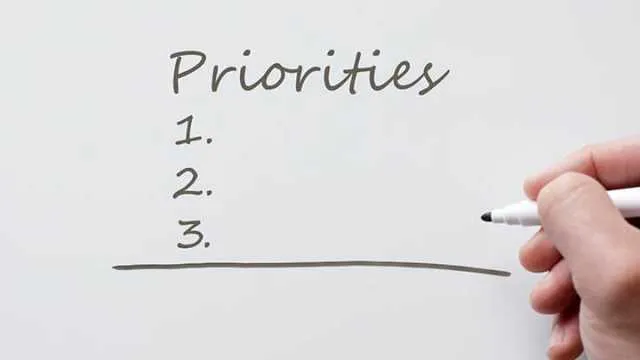
- Share on Facebook23
- Share on Pinterest
- Share on Twitter
Depending on your profession or areas of knowledge, you may already be familiar with a concept called “zero-based budgeting.” For those unaware, this is an approach to financial spending in a professional context. It differs from more traditionally used approaches to budgeting.
Zero-based budgeting
If profits are going up, traditional budgeting generally approves incremental increases in spending, say at two percent per year. The feeling is that the small increase in spending will help improve the overall efficiency of the organization and allow profits to continue to grow. With traditionally based budgeting, only new expenditures require approval. Under zero-based budgeting, however, each expenditure is reviewed on a continual basis to evaluate its overall contribution to the bottom line.
For example, let’s say a company approved a $1,000 annual budget on muffins several fiscal periods ago. Under traditionally based budgeting, that muffin budget would roll over every period without being reviewed. If profits are going up, there is no need to evaluate already approved expenditures, right? Under traditional budgeting, this company would continue to feed their employees muffins until something forces them to do otherwise.
On the other hand, the zero-based budgeting company will stop and evaluate. They could possibly decide that the sugar content in the muffins is not beneficial to employee productiveness. They may also invest that budget into turmeric and quinoa salads instead.
The positive aspect of zero-based budgeting is that it encourages reflection and efficiency. The negative aspect of this approach is that it’s more time consuming than simply reviewing new expenditures and allowing old ones to roll over. Many people are now taking a zero-based approach to more than just their financial spending — they are applying it to their whole life.
Zero-based living
Much like its budgeting counterpart, zero-based living encourages reflection and evaluation, only towards different things. Zero-based budgeting looks at just financial expenditures. On the other hand, zero-based living looks at expenditures of energy, time and feelings of well-being. While zero-based budgeting aims to increase profits, zero-based living aims to increase the overall quality of life.
Your version of the good life

This isn’t going to work unless you are completely honest with yourself about what you want out of life. Then you must write these end-goals down. The first step is to simply define what constitutes a good life for you. Whatever makes your life feel like a good one should be put on this list. Some examples include:
- Amount of time spent feeling happy
- Time with family and/or friends
- Time spent laughing
- Traveling
- Health
- Sense of purpose
Please note that “money” and “career success” do not appear in the above examples. That is not to say they wouldn’t appear on your list, but remember, the above list is our end-goals only — not our way to get there. If all you truly desire is to simply have a large chunk of money that you can periodically sit and stare at, then go ahead and put that on your list. If on the other hand, you would like to have financial freedom because it will allow you to spend more time with family or allow you to purchase things that will make you feel happy, then money is not your end goal.
Likewise, “career success” will not normally appear on such lists either. A career is a means to an end, which is usually having a sense of purpose in life. But if all you really want is to stand atop an ivory tower at 70 years old and shout “I’m a CEO!” then you go right ahead and work towards that goal.
Life auditing, starting at zero
So now let’s take a look at everything we do in life. Let’s see if the items contained on the list are truly the best steps to get us towards where we want to be. Write down everything you do, such as:
- Go to work five days a week at a bank
- Workout at a gym three days a week
- Watch “Homeland”
- Eat a sandwich
- … literally everything else (we are starting at zero!)
Next, evaluate how each activity is leading you towards your definition of a good life. You work at the bank five days a week because the paycheck allows you to pay for a place to live, food and a Netflix subscription (to watch Homeland). However, the negative aspects of working at the bank include less time with family, less time feeling happy and less traveling.
So, is there a way to meet your financial needs without sacrificing so much time? A decade ago that answer was probably “no.” These days, things have drastically changed and many people are starting new lives away from traditional career paths. Freelancers, consultants and home-based businesses are on the rise for people who wish to purchase back some of the time they previously sold to their employers.
Health

A zero-based approach also works great for a diet. If we know that being healthy is one of the things that brings us life satisfaction, but drinking gallons of soda pop is not, then perhaps we can take soda off of our grocery list (unless recommended by a terrible doctor).
On the other hand, perhaps health is not very important, as you believe a meteor is going to wipe us out in a few years anyway. If you also really enjoy drinking soda, well then go ahead and drink that soda my friend (though we don’t recommend it).
Taking a zero-based approach to your groceries is a surefire way to identify foods that are hindering your health goals and not providing much in the way of pleasure.
Main takeaway
How this exercise goes will depend entirely on your definition of what a good life is. The important part of zero-based living is to not act out of habit, but instead to be periodically reviewing all of your activities to ensure that they are pushing you towards your end goal.
Eliminate what isn’t pushing you forward and do more of what is. Identify obstacles in your path and find ways to move past them.
— Ian Carey
- Share on Facebook23
- Share on Pinterest
- Share on Twitter

